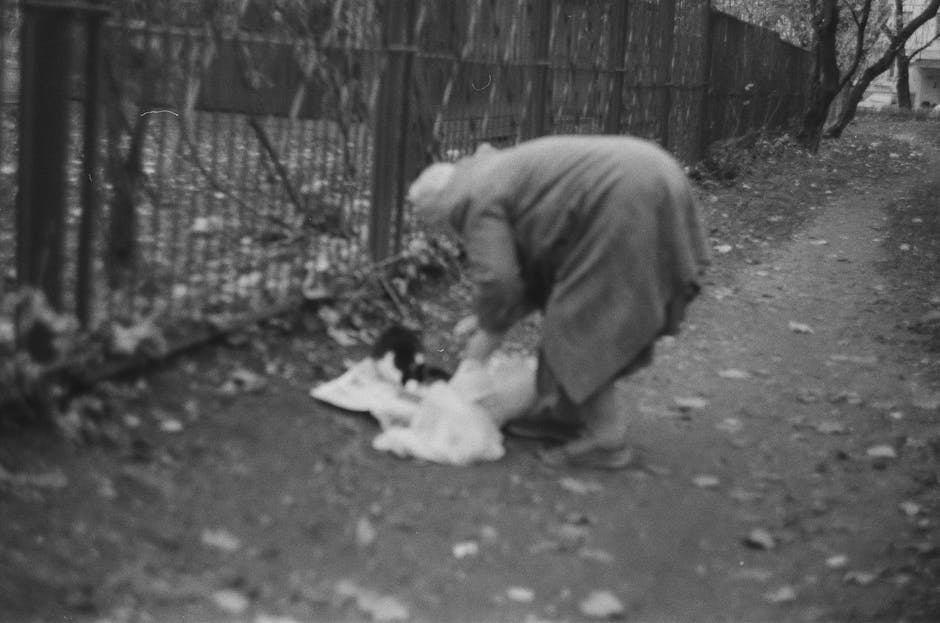Tips for Transitioning Back to Daily Life
Transitioning back to daily life after a significant event or change can be a challenging process for many individuals. Whether you are returning from a long vacation, recovering from an illness, adjusting to a new job, or adapting to life post-pandemic, the shift from a different routine back to the familiar can be overwhelming. In this article, we will explore various tips and strategies to help ease this transition, allowing you to navigate the change with greater ease and success.
Understanding the Transition Process

Before delving into specific tips, it’s important to understand the transition process itself. Transitioning back to daily life involves adapting to a new set of circumstances, re-establishing routines, and integrating changes into your everyday activities. This process can be emotional, physical, and mental, requiring patience, self-awareness, and resilience.
One key aspect of the transition process is acknowledging and accepting the change. Whether the transition is voluntary or involuntary, recognizing that things are different and allowing yourself time to adjust is crucial. It’s normal to feel a range of emotions during this period, including nostalgia, anxiety, excitement, or even sadness. By acknowledging your feelings and giving yourself permission to experience them, you can better cope with the transition.
Another important aspect of the transition process is setting realistic expectations. Understand that it may take time to fully adapt to the new circumstances and that setbacks or challenges are a natural part of the process. By approaching the transition with patience and a growth mindset, you can navigate the change more effectively.
Establishing a Routine

One of the most effective ways to ease the transition back to daily life is by establishing a routine. Routines provide structure, predictability, and a sense of stability, which can be comforting during times of change. To create a new routine, start by identifying your priorities and setting realistic goals for each day.
Consider incorporating activities that bring you joy or relaxation into your daily schedule. Whether it’s going for a walk, practicing mindfulness, reading a book, or spending time with loved ones, make time for activities that nourish your mind, body, and soul. By prioritizing self-care and activities that bring you happiness, you can better cope with the challenges of the transition process.
In addition to self-care activities, it’s also important to focus on your physical health during the transition. Make sure to prioritize sleep, exercise, and nutrition to support your overall well-being. Physical health plays a significant role in mental and emotional well-being, so taking care of your body is essential during times of change.
Furthermore, consider incorporating small rituals or habits into your daily routine to create a sense of normalcy. Whether it’s brewing a cup of coffee in the morning, journaling before bed, or taking a few minutes to meditate, these small rituals can provide comfort and structure during the transition process.
Seeking Support

During times of transition, it’s crucial to seek support from friends, family, or professionals. Talking to someone about your feelings, fears, and challenges can help you process your emotions and gain perspective on the transition. Whether it’s a trusted friend, a supportive family member, or a therapist, reaching out for support can make a significant difference in how you navigate the change.
In addition to seeking emotional support, consider reaching out for practical help as well. Whether it’s delegating tasks, asking for assistance with responsibilities, or seeking guidance from a mentor or coach, having a support system in place can lighten your load and provide you with the resources you need to successfully transition back to daily life.
If you’re struggling to cope with the transition on your own, don’t hesitate to seek professional help. A therapist, counselor, or mental health professional can provide you with the tools, strategies, and support you need to navigate the transition process effectively. Remember, asking for help is a sign of strength, not weakness.
Setting Boundaries

As you navigate the transition back to daily life, it’s important to set boundaries to protect your time, energy, and well-being. Establishing clear boundaries with yourself and others can help you manage expectations, reduce stress, and maintain a healthy balance in your life.
One way to set boundaries is by prioritizing your needs and honoring your limits. Identify what is important to you, whether it’s time for self-care, space for relaxation, or boundaries around work or social commitments. Communicate your boundaries clearly and assertively to others, advocating for your needs and ensuring that they are respected.
It’s also important to set boundaries around technology and information consumption. In today’s digital age, it’s easy to feel overwhelmed by constant notifications, emails, and social media updates. Consider setting limits on your screen time, creating tech-free zones in your home, or establishing boundaries around when and how you engage with technology.
Furthermore, setting boundaries with yourself is equally important. Practice self-discipline, self-care, and self-awareness to ensure that you are honoring your own needs and values. By setting boundaries with yourself, you can cultivate a strong sense of self-respect and self-compassion during the transition process.
Practicing Mindfulness
Mindfulness is a powerful tool for navigating transitions and managing change. By cultivating present-moment awareness, acceptance, and non-judgment, mindfulness can help you stay grounded, centered, and resilient during the transition back to daily life. Whether it’s through meditation, breathing exercises, or mindfulness practices, incorporating mindfulness into your daily routine can help you cope with the challenges of change.
One way to practice mindfulness is through meditation. Set aside a few minutes each day to sit quietly, focus on your breath, and observe your thoughts and emotions without judgment. Mindfulness meditation can help you develop clarity, concentration, and inner peace, allowing you to navigate the transition process with greater ease.
In addition to meditation, you can practice mindfulness in your daily activities by bringing your full attention to the present moment. Whether you’re eating, walking, working, or spending time with loved ones, try to be fully present and engaged in each moment. By cultivating mindfulness in your daily life, you can enhance your awareness, reduce stress, and cultivate a sense of calm amidst the chaos of change.
Remember that mindfulness is a skill that takes practice and patience to develop. Be gentle with yourself as you explore mindfulness practices and find what works best for you. By incorporating mindfulness into your daily routine, you can enhance your ability to cope with the challenges of transitioning back to daily life.
Embracing Flexibility and Adaptability
Flexibility and adaptability are essential qualities for navigating transitions and adjusting to change. In a world that is constantly evolving, being able to pivot, adjust, and flow with the changes is crucial for success and well-being. Embracing flexibility and adaptability can help you navigate the uncertainty and challenges of transitioning back to daily life.
One way to cultivate flexibility is by practicing resilience and embracing a growth mindset. Resilience involves bouncing back from setbacks, learning from challenges, and adapting to change with grace and courage. By cultivating resilience, you can build a strong foundation for navigating transitions and overcoming obstacles with resilience and determination.
Furthermore, embracing a growth mindset involves viewing challenges as opportunities for growth, learning, and self-improvement. Instead of seeing change as a threat or obstacle, see it as a chance to evolve, expand, and transform. By adopting a growth mindset, you can approach the transition process with curiosity, openness, and a willingness to learn and grow.
Remember that change is a natural part of life, and transitions are opportunities for growth, transformation, and renewal. By embracing flexibility and adaptability, you can navigate the transition back to daily life with confidence, resilience, and a sense of empowerment.
Reflecting and Celebrating Progress
As you navigate the transition back to daily life, take time to reflect on your progress and celebrate your achievements. Reflecting on your journey, acknowledging your growth, and celebrating your successes can help you cultivate gratitude, self-awareness, and a sense of accomplishment during the transition process.
One way to reflect on your progress is by journaling or keeping a gratitude practice. Take time each day to write down your thoughts, feelings, and experiences during the transition. Reflect on the challenges you’ve overcome, the lessons you’ve learned, and the moments of joy or growth you’ve experienced. By documenting your journey, you can gain insight into your progress and cultivate a sense of appreciation for how far you’ve come.
In addition to reflection, celebrate your achievements and milestones along the way. Whether it’s reaching a goal, overcoming a challenge, or making a positive change in your life, take time to acknowledge and celebrate your accomplishments. Celebrating your progress can boost your confidence, motivation, and sense of self-worth, empowering you to continue moving forward with resilience and determination.
Remember that transitions are opportunities for growth, self-discovery, and reinvention. By reflecting on your progress and celebrating your achievements, you can navigate the transition back to daily life with grace, gratitude, and a sense of fulfillment.
Common Misconceptions
One common misconception about transitioning back to daily life is that it should be easy and seamless. In reality, transitions can be challenging, emotional, and complex, requiring time, effort, and support to navigate effectively. It’s important to acknowledge that transitions are a natural part of life and that it’s okay to struggle or feel overwhelmed during the process.
Another misconception is that transitions should be approached alone, without seeking help or support from others. In truth, seeking support from friends, family, or professionals can make a significant difference in how you navigate the transition process. Don’t be afraid to reach out for help when you need it, as having a support system in place can provide you with the resources and guidance you need to successfully transition back to daily life.
Conclusion
Transitioning back to daily life is a process that involves adapting to change, establishing routines, seeking support, setting boundaries, practicing mindfulness, embracing flexibility, and celebrating progress. By following these tips and strategies, you can navigate the transition with greater ease, resilience, and confidence. Remember that transitions are opportunities for growth, self-discovery, and renewal. Embrace the journey, stay open to change, and trust in your ability to navigate the challenges of transitioning back to daily life.
As you embark on this journey of transition, remember to be patient, kind to yourself, and open to new possibilities. By taking small steps each day, practicing self-care, seeking support, and staying present in the moment, you can navigate the transition back to daily life with grace, resilience, and a sense of empowerment.




